IPIAC專班|IPIAC Class
專班簡介|Introduction
Based on the “New Southbound Policy” policy outline approved by the President at the Foreign Economic and Trade Strategic Talks on August 16, 2016, the Executive Yuan formally proposed the “New Southbound Policy Promotion Plan” on September 5, 2016. The “New Southbound Policy Promotion Plan” adheres to the core concept of “long-term development, diversified development, and mutual benefit”, integrating the resources and strength of various ministries, local governments, and private enterprises and groups. It consists of four major aspects: “economic and trade cooperation”, “talent exchange”, “resource sharing” and “regional links”. It hopes to create a new mutually beneficial and win-win cooperation model with ASEAN, South Asia, New Zealand and Australia, and establish an “economic community consciousness”. Among them, ASEAN countries have advantages in terms of geographical location, demographic dividend, labor costs, and agricultural and mineral resources. In 2013, the population of ASEAN countries accounted for about 10% of the world’s population. The huge domestic demand market has the opportunity to provide important impetus for my country’s economic and trade growth, and will also bring new changes to my country’s bilateral economic and trade relations with ASEAN countries. The Republic of the Philippines is an archipelago country located in Southeast Asia, consisting of 7,101 islands. It has a domestic population of approximately 93 million, plus approximately 11 million overseas Filipinos. In 2015, the total population exceeded 100 million (12th in the world), making it the second country in Southeast Asia with a population of over 100 million. About 83% of the people are Catholics. In addition to geographical advantages, a large population, a young population structure and a stable political and economic environment are all advantages for companies to develop southward in the Philippines.
(I) This special class recruits students from the Philippines and conducts talent exchange and talent cultivation in accordance with the “New Southbound Policy Promotion Plan”. The main educational goals include:
To cultivate outstanding talents with practical skills and Chinese language skills for domestic industries, enhance the exchange of talents between Taiwan and the Philippines through the mechanism of local technical training classes, and establish a long-term and in-depth education platform.
Close to the needs of the industry, we work with our partners to plan and design practical teaching materials and teaching processes, combine school resources with manufacturer needs, shorten the gap in talent capabilities, and cultivate talents that meet the needs of the industry through industry-university cooperation education to solve the serious shortage of manpower in the industry.
Implement an internship learning mechanism to help students understand Taiwan’s culture and work environment, practice corporate operating procedures and industry expertise, cultivate reserve cadres and seed employees for corporate development in the South, and enhance the competitiveness of corporate development in the South.
We work closely with enterprises to improve students’ adaptation to study and internship in Taiwan through mechanisms such as curriculum teaching, life guidance, and career consultation provided by schools, thereby stabilizing the future source of manpower for enterprises and reducing the pressure of labor shortage.
It provides opportunities for Filipino students to study in universities in Taiwan, learn professional knowledge, gain internship experience, and learn Chinese, thereby improving their employment competitiveness.
(II) Close cooperation with domestic enterprises to provide students with a practical learning environment of “learning by doing and doing by learning”. The expected results of this special class are as follows:
To enhance the mutual understanding and communication between students from both my country and the Philippines, understand the similarities and differences in each other’s culture and working environment, and establish a platform for cooperation between the two sides to facilitate future cooperation and development.
This special class can train 40 talents that meet the needs of the industry every year, solving the serious shortage of manpower in the industry. Through this cooperation mechanism, the mechanism of cooperation between enterprises and schools can be enhanced.
Through the industry-university cooperation mechanism of this special class, we assisted 40 overseas students to improve their future career development and family economic conditions, and be friendly to disadvantaged students in the Philippines.
After students complete the course, companies are able to retain more than 40% of graduates, reducing the manpower shortage problem that the industry often faces.
The students trained in this special class can serve as the backbone of the new southbound development of cooperating enterprises. Through the students of this special class, enterprises can understand the economic, trade, cultural customs, religion and people’s livelihood needs of the Philippines, thereby improving the success rate of the enterprises’ southward development.
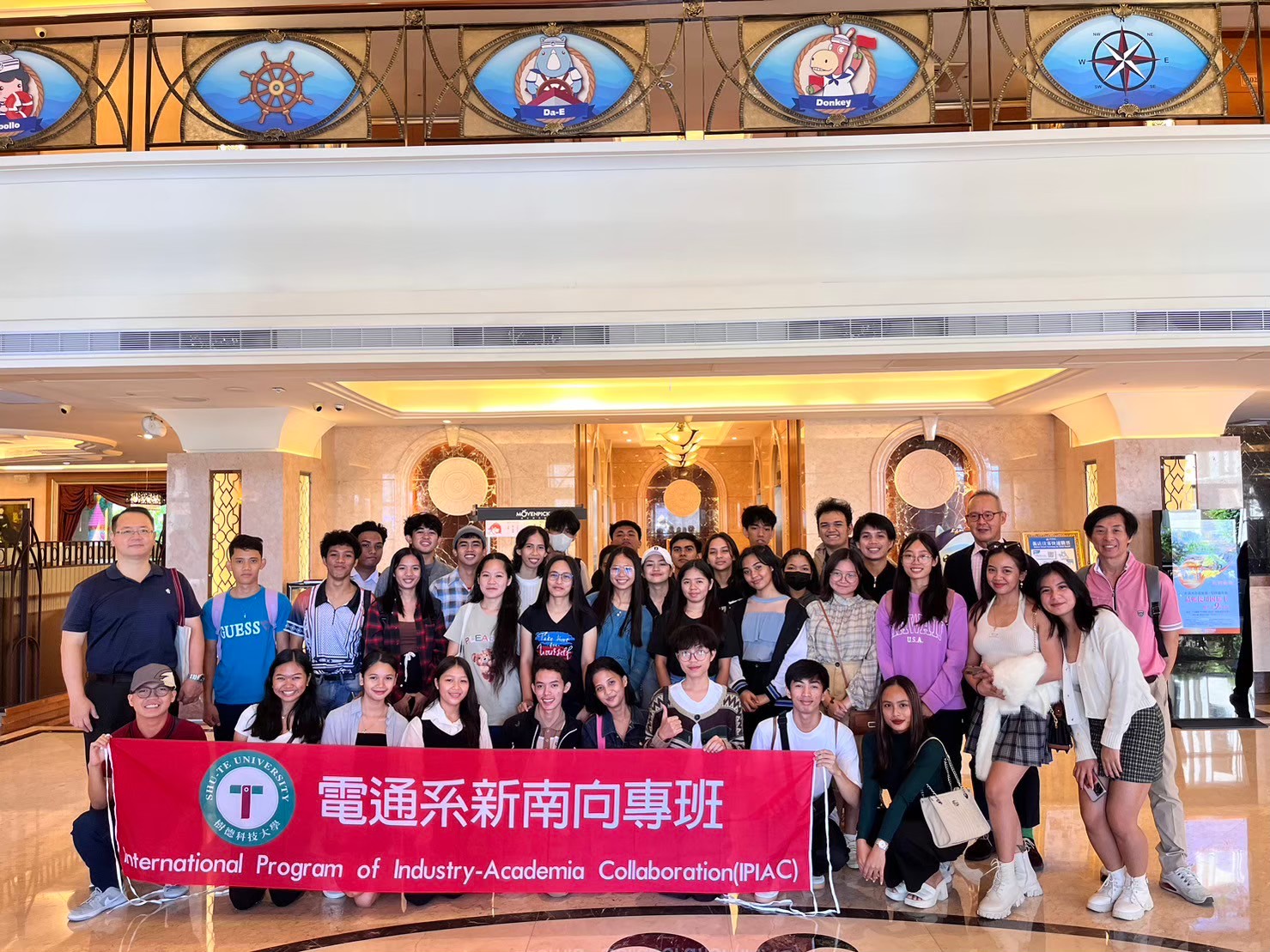
專班特色|Feature
As the world moves towards a new era of knowledge-based economy, the world’s major technologically advanced countries are committed to integrating scientific and technological resources, planning scientific and technological goals and strategies, in order to enhance the country’s overall competitiveness. The planning and use of scientific and technological talent resources are the focus of scientific and technological development. At present, when industrial scientific and technological research and development is moving towards innovation and foresight, the demand for cross-disciplinary and forward-looking R&D talents is even more urgent. There is still a considerable gap between the demand and supply of manpower in Taiwan’s high-tech industries, and there is a serious shortage of high-tech talents. Among all high-tech talents, the main shortage is in senior software, hardware and system integration design talents.
With the booming development of the wireless and mobile phone communications markets, the demand for technical personnel in related microcomputer systems, communication systems, radio frequency and microwave circuits is increasing. In the foreseeable future, the wireless communications industry will create a huge market for Taiwan. The Institute for Information Industry’s Market Intelligence Center predicts that Taiwan’s wireless communications industry output value will reach NT$1.4 trillion. In addition, according to the statistical report of MIC, 5G wireless communication technology will have development advantages in the future and has been gradually verified on communication platforms. It is estimated that it will be widely used in communication systems after 2023. Judging from the development trend of 5G technology, 39 operators and 19 countries around the world will introduce LTE in the future and start deployment in 2019-2020. The number of communication base stations used will increase day by day. Therefore, the demand for relevant communications talents will increase in the future.
Therefore, in order to meet the industry demand and future trends for the above-mentioned professional and technical talents, the teaching development of this department focuses on cultivating three types of related talents, namely microcomputer applications, communications, and electronic circuits, so that students can be competent for various related representative jobs and hope that students can meet the needs of the industry after graduation.
In the past, the technical and vocational education system has cultivated many basic technical talents, promoted the development of Taiwan’s related science and technology industries, and made great contributions to Taiwan’s economic and social development. However, facing the rapid expansion of opportunities for higher technical and vocational education, most students from senior vocational schools choose to continue their studies after graduation, which has caused a serious shortage of professional basic manpower in the science and technology industry. In addition, in recent years, due to the rapid increase in domestic colleges and universities, the number of college students has expanded rapidly, but due to the differences in the curriculum arrangements of various colleges and universities, the talents trained by colleges and universities do not meet the needs of the business community. Therefore, the unemployment situation among university graduates is becoming increasingly serious.
The Department of Computer and Communications at Shu-Te University has entered its 22nd year since its establishment in 2002. Its graduates have received high praise in the industry and it is one of the main places in southern Taiwan for cultivating professional computer application and communications talents. In order to cultivate basic professional talents suitable for the current microcomputer application and communication industry, the department has connected with enterprises to establish a close teaching and internship cooperation platform between the business community and the school. In promoting curriculum and teaching objectives, we integrate the curriculum features of higher vocational electronics, electrical engineering and information science, coordinate the certification system, strengthen the practical education feature of “learning by doing, learning by doing” in technical and vocational education, and uphold the “practice-oriented” teaching concept, so that students can combine the learned theories with practices and fully apply them to actual work. By experiencing professional life experience, they can acquire professional skills and develop excellent service attitudes, with the goal of cultivating excellent professional basic personnel and developing human resources. Therefore, our school intends to apply for the “International Learning-Industry Cooperation Class” for the Department of Computer and Communications in the 114th academic year.
The educational goal of our school is to “implement the school motto of academic, intellectual, happy and hope, and create a distinctive, international, high-quality and diversified learning environment. Cultivate outstanding students with both technical skills and moral integrity, and make them the preferred talents in the industry.” The School of Information Science and Technology is in line with the educational goals of the University and has set the educational goals of the School of Information Science and Technology as “to cultivate professional talents with the work skills and attitudes required by the information and communications industry; to establish cooperative relationships with the information and communications industry, expand the scope of the employment market, and create a stable education and living environment.”
Our school established the Institute of Computer and Communications in 1990, and divided and integrated it with the Department of Information Engineering and the Department of Information Management of our college, in order to cultivate professional talents related to electronics and communications, thereby enhancing the overall competitiveness of the industry. Since the establishment of one daytime class in 2001, the four-year technical college was expanded to two classes in 2005, and a nighttime continuing education class was added. In order to match the development goals of the department, the curriculum planning focuses on the cultivation and training of students’ professional knowledge, practical skills, creativity and teamwork, in order to establish the basic qualities and core abilities of the profession and meet the needs of professional characteristics, industry development and student characteristics. The teaching objectives and characteristics of this department are to impart theoretical knowledge through local curriculum planning and administrative examinations; to cultivate students’ creativity and teamwork attitude through project production, competition, patent writing and workplace internships, so that this department can become the cradle of professional and technical personnel training in “microcomputer applications”, “communications” and “electronic circuits” in Southern University of Science and Technology, and to cultivate students’ local abilities required for future employment in the workplace. The department passed the most recent science and technology university evaluation in the 108th academic year and obtained the department’s quality assurance accreditation, which is valid for 6 years.
In line with the industry demand and future trends for professional and technical personnel, the department focuses on developing three types of talents, namely microcomputer applications, communications, and electronic circuits, so that students can be competent for various representative jobs and hope that graduates can meet the needs of the industry. To achieve this goal, the department has hired full-time teachers with expertise that matches the educational goals, so that we can provide students with professional and in-depth courses. Most of the teachers also have practical experience in the industry and relevant professional certificates, providing students with integrated professional practical knowledge. At the same time, in order to achieve the goal of cultivating students with a practical focus in technical and vocational education, the department has currently invested considerable funds to train and encourage students to obtain relevant certificates in conjunction with the opening of existing programs. The department has set up testing sites for single-chip practical and professional certificates, testing sites for the Ministry of Labor’s Class B and C certificates for communications technicians, and testing sites for Class B network installation certificates. Students in this special class can be encouraged and guided to practice for relevant certificate exams in their spare time.
師資陣容|Faculty
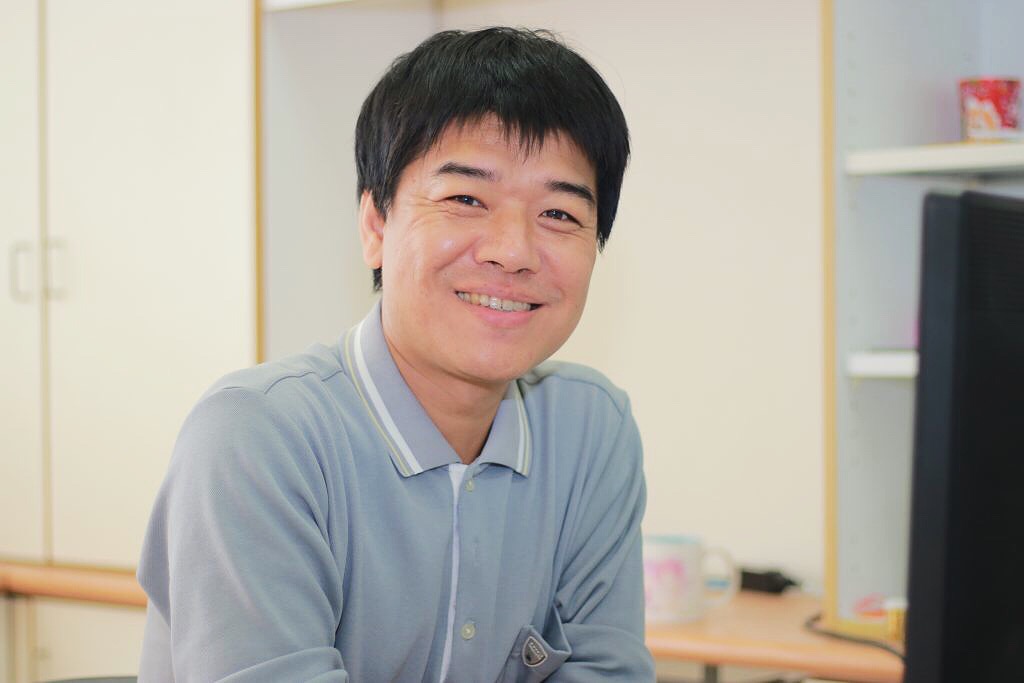
程達隆|D.L. Cheng
副教授兼系主任|Associate Professor and Department Chair
電話(Phone):07-6158000#4807
信箱(E-Mail):dlcheng@stu.edu.tw
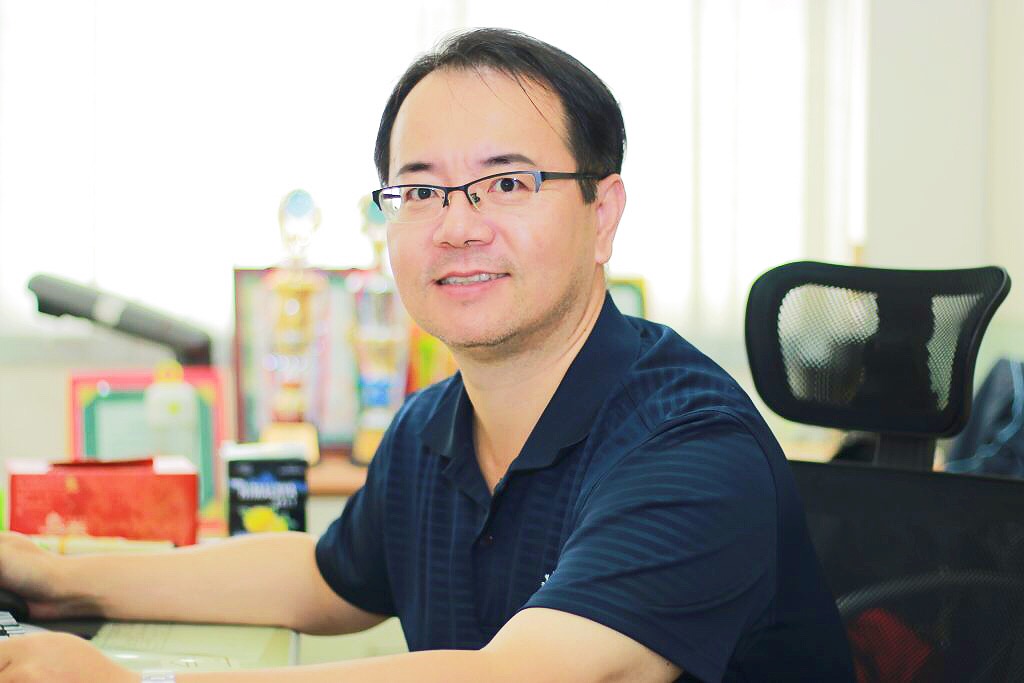
徐文修|W.S. Hsu
副教授|Associate Professor
電話(Phone):07-6158000#4815
信箱(E-Mail):hsuwhr40@stu.edu.tw
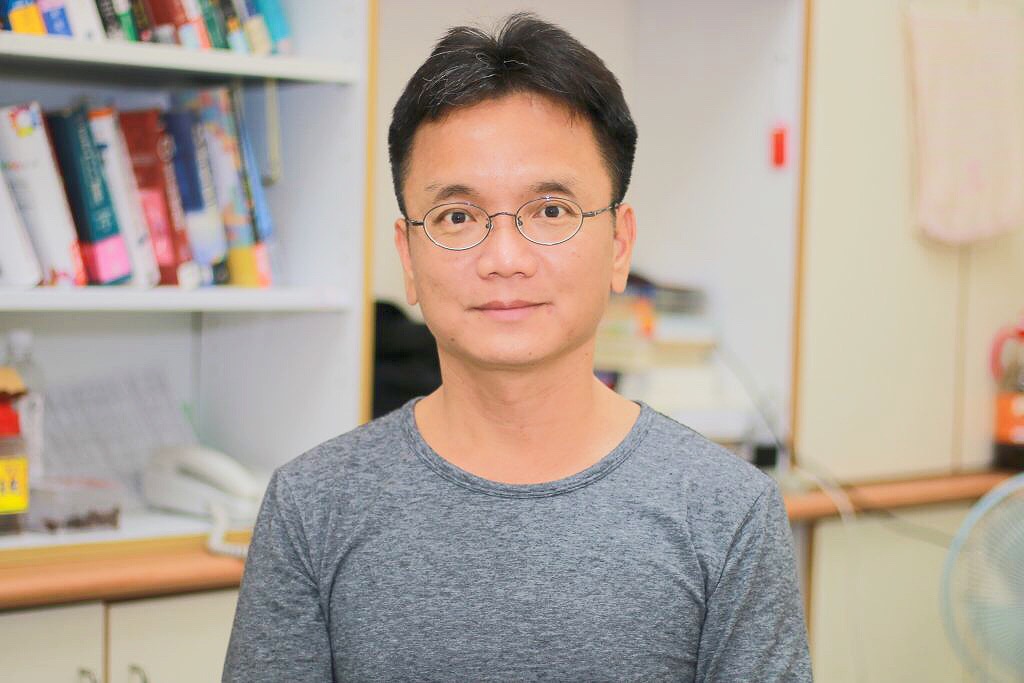
張偉德|Wei-Der Chang
特聘教授|Distinguished Professor
電話(Phone):07-6158000#4808
信箱(E-Mail):wdchang@stu.edu.tw
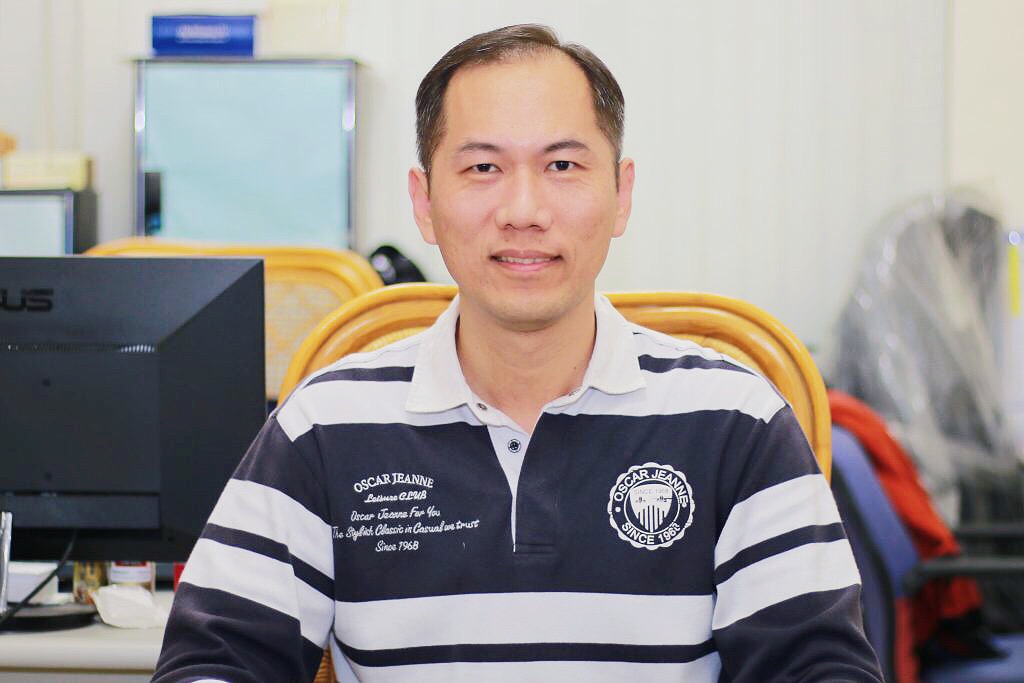
高國陞|K.S. Kao
副教授|Associate Professor
電話(Phone):07-6158000#4899
信箱(E-Mail):kks@stu.edu.tw
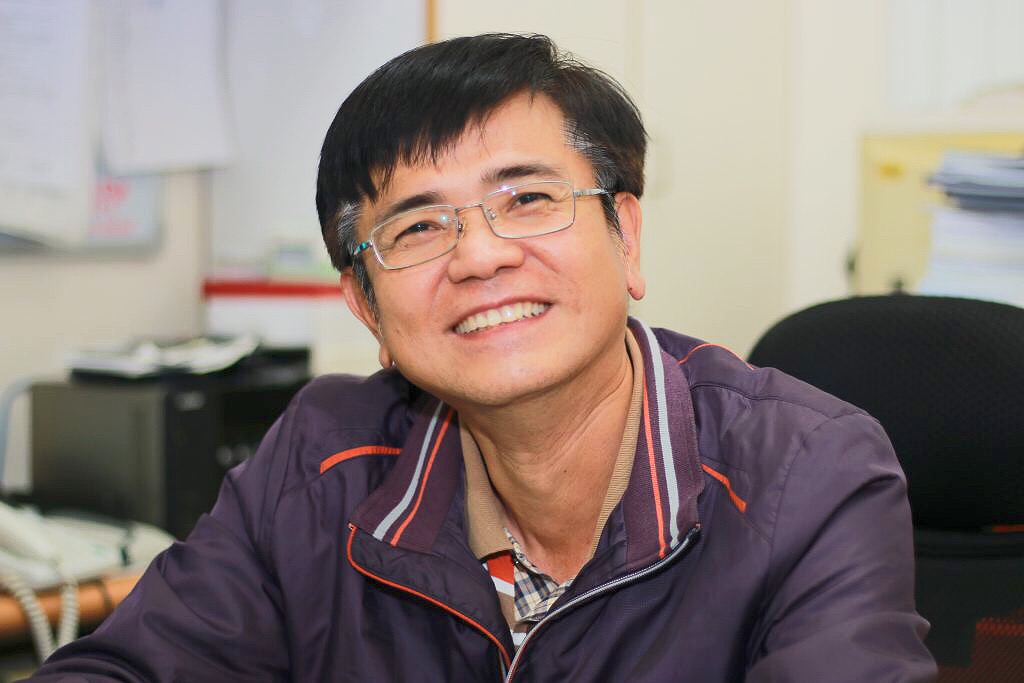
潘善政|S.C. Pan
副教授|Associate Professor
電話(Phone):07-6158000#4803
信箱(E-Mail):pansc123@stu.edu.tw
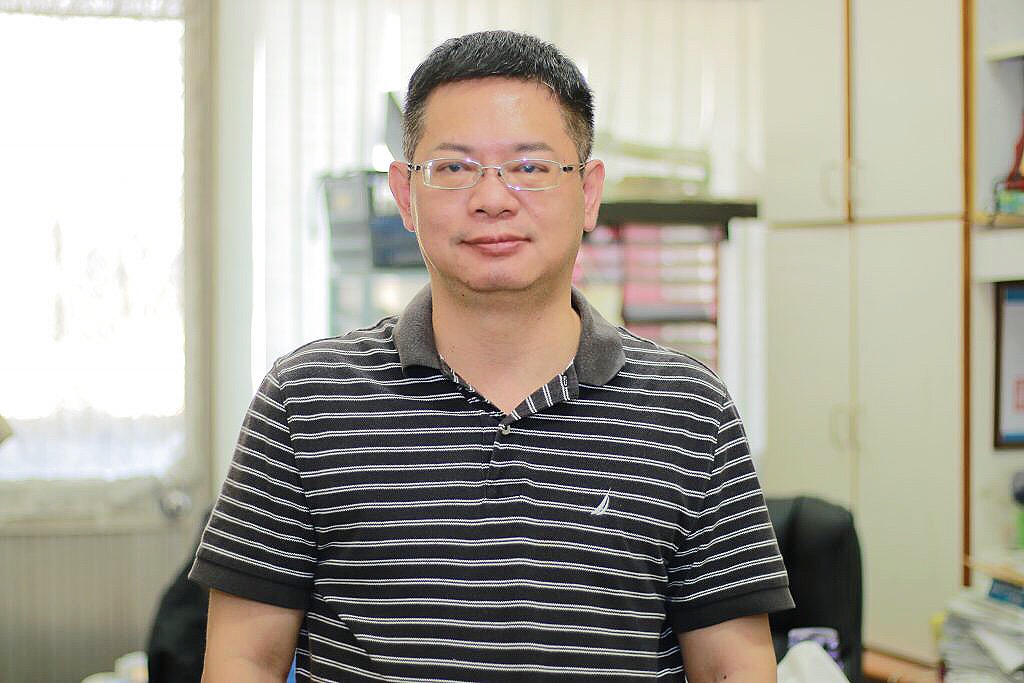
施順鵬|S.P. Shih
助理教授|Assistant Professor
電話(Phone):07-6158000#4809
信箱(E-Mail):spshih@stu.edu.tw
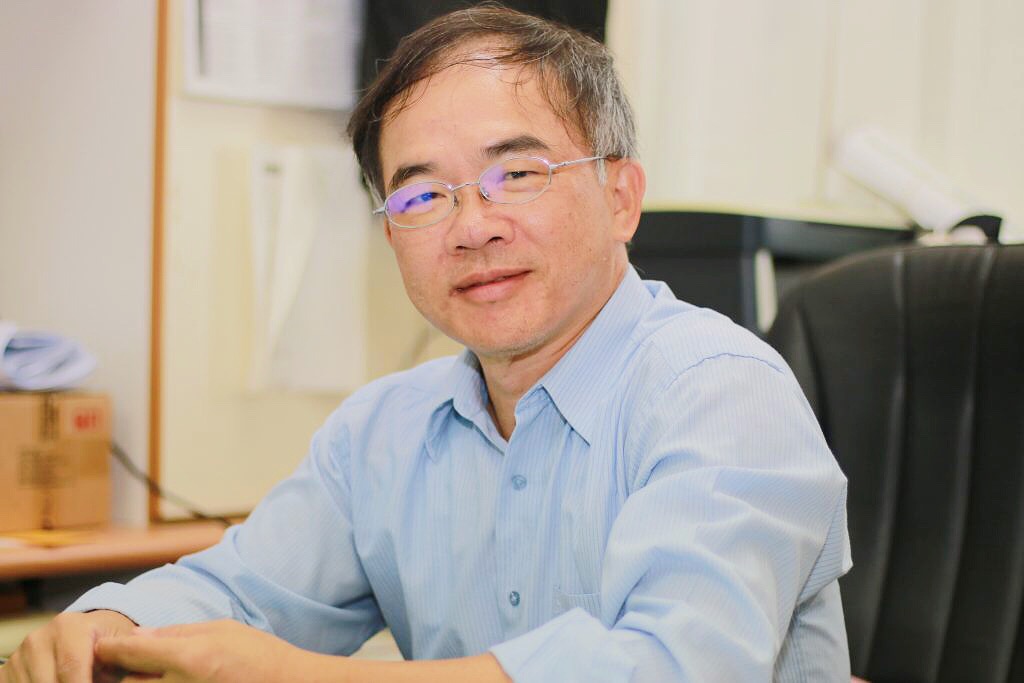
池慶龍|C.L. Chih
副教授|Associate Professor
電話(Phone):07-6158000#4816
信箱(E-Mail):pipn@stu.edu.tw
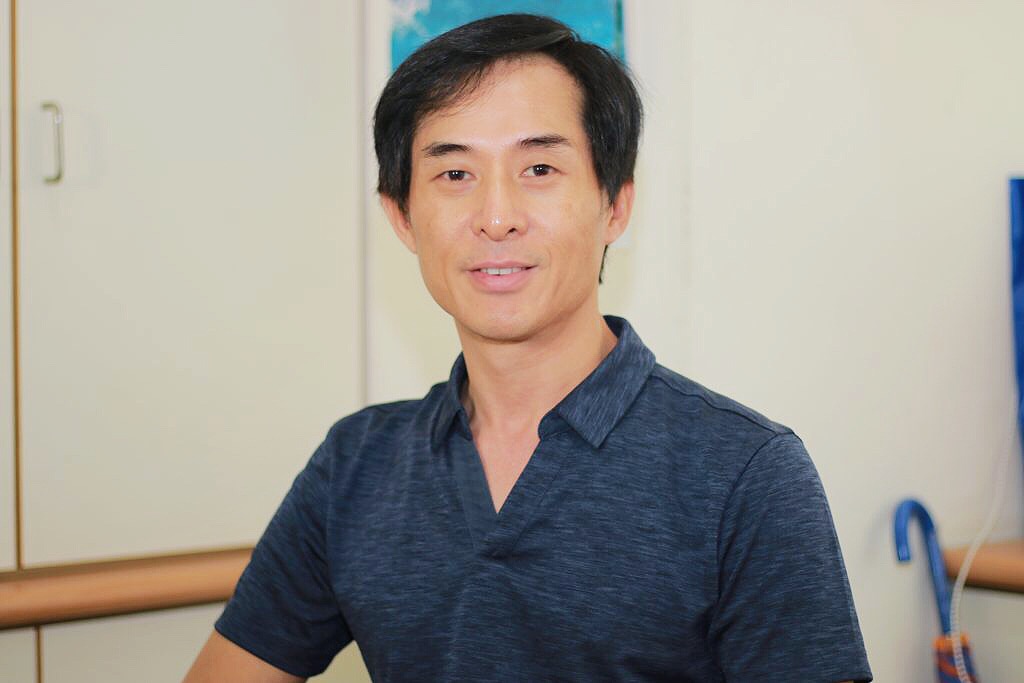
陳武男|W.N. Chen
副教授 |Associate Professor
電話(Phone):07-6158000#4812
信箱(E-Mail):dancer@stu.edu.tw
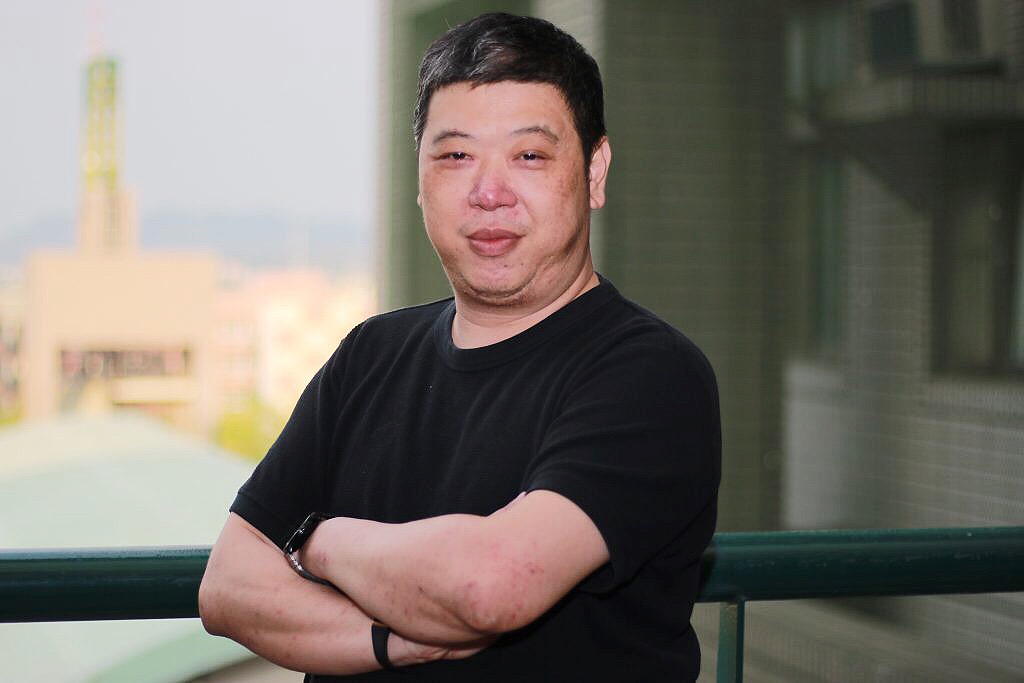
鄭國華|K.H. Cheng
助理教授(技) |Assistant Professor (Technical)
電話(Phone):07-6158000#4810
信箱(E-Mail):khcheng@stu.edu.tw
專班課程|Course
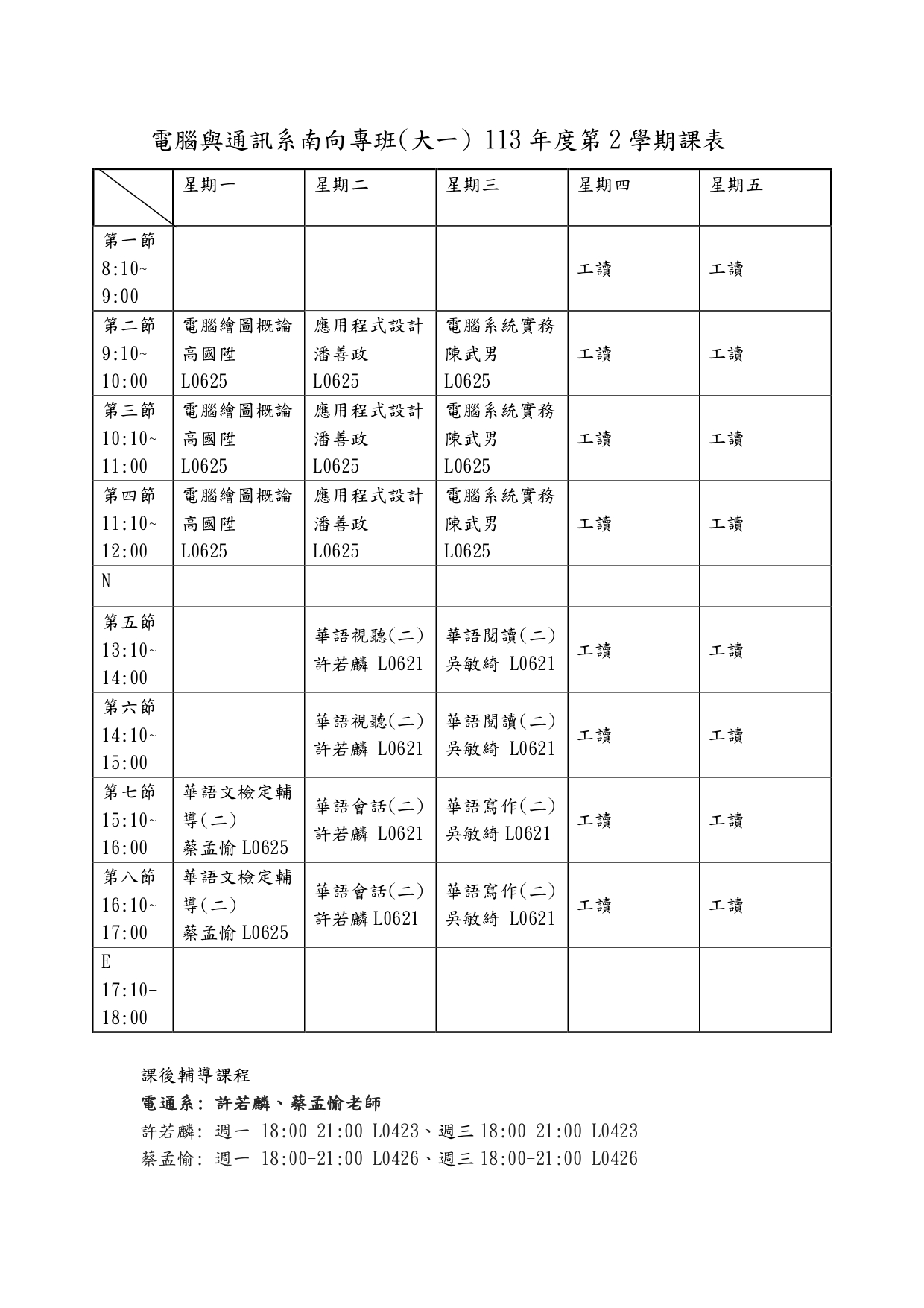

實驗室|Laboratory
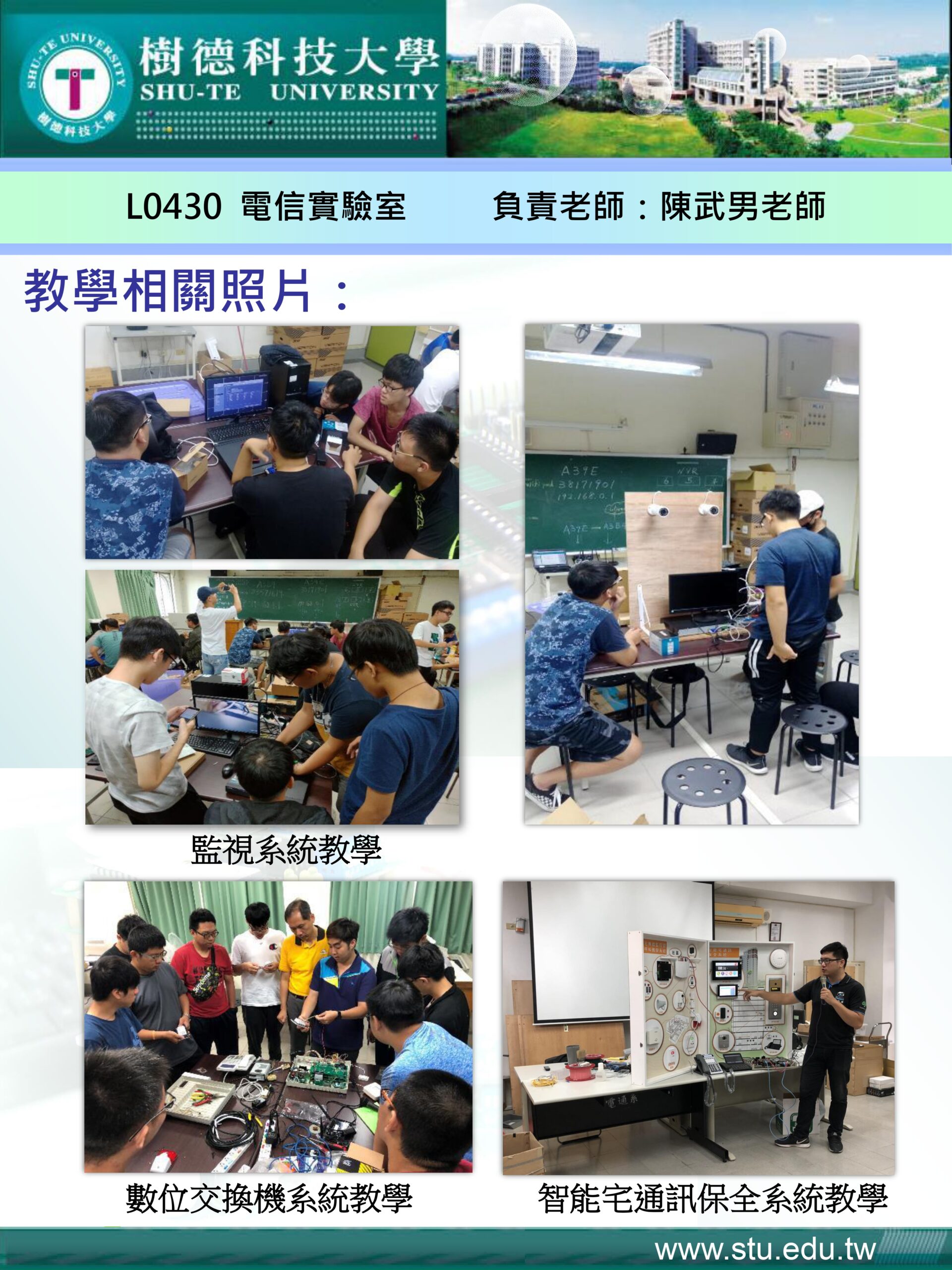
電信實驗室|指導老師:陳武男老師
Telecommunications Laboratory|Instructor: W.N. Chen
實驗室位置:L0430
Laboratory location:L0430
適用課程:電路技術I、電路技術II、監視系統實務、通訊技術與應用
Applicable courses:Circuit Technology I, Circuit Technology II, Surveillance System Practice, Communication Technology and Application
主要用途:教學、研究 、證照輔導、專題製作
Main purposes: teaching, research, certificate guidance, special topic production
實驗室目標:配合相關課程的進行,提供電信及通訊工程之教學訓練,俾使學生將理論課程與實際應用設計結合
Laboratory objectives: Provide teaching training in telecommunications and communication engineering in conjunction with related courses, so that students can combine theoretical courses with practical application design
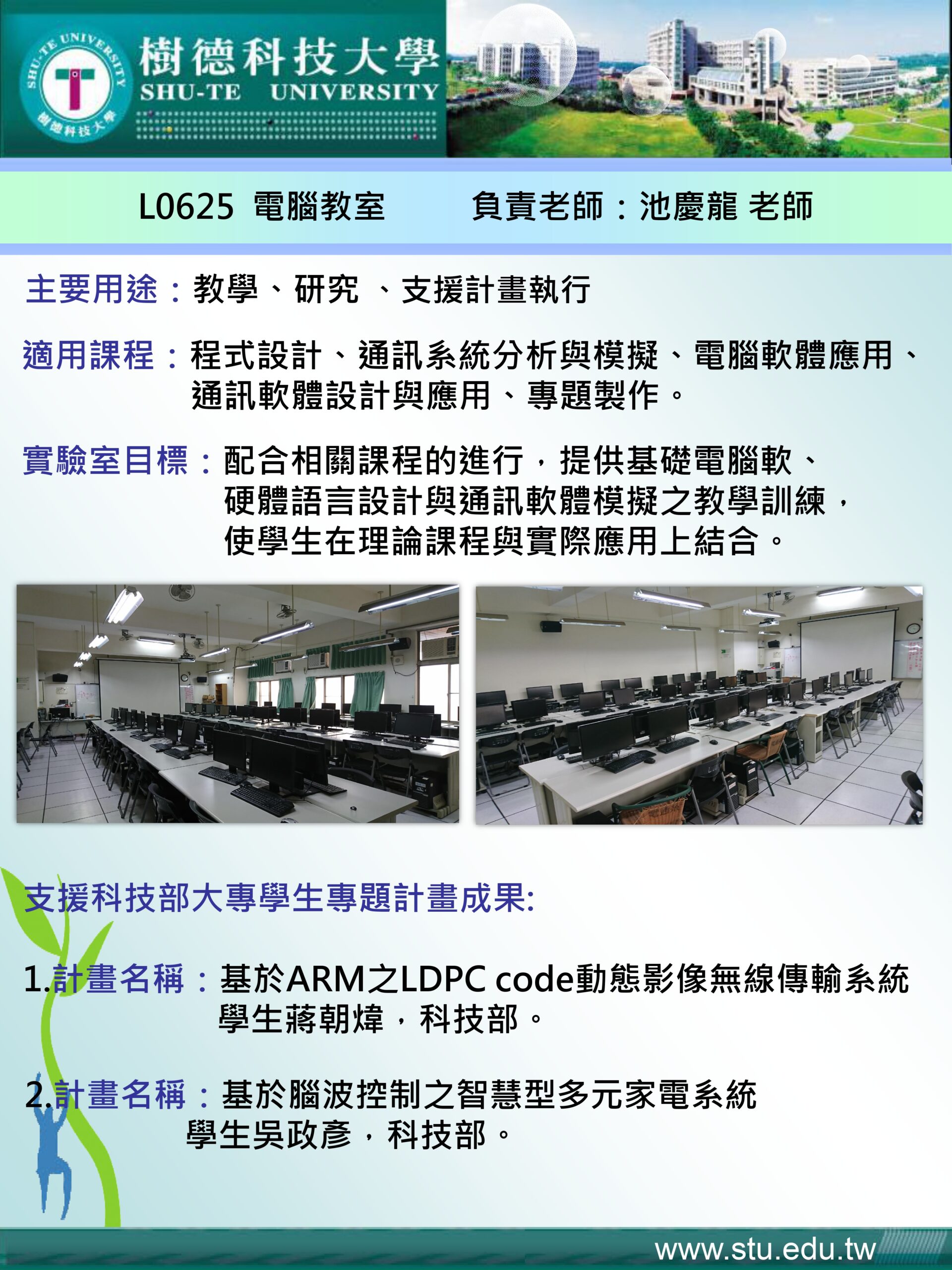
多媒體實驗室|指導老師:池慶龍老師
Multimedia Laboratory|Instructor: C.L. Chih
實驗室位置:L0625
Laboratory location:L0625
適用課程:程式設計、通訊系統分析與模擬、電腦軟體應用、 通訊軟體設計與應用、專題製作
Applicable courses:Programming, communication system analysis and simulation, computer software application, communication software design and application, special project production
主要用途:教學、研究 、支援計畫執行
Main purposes: Teaching, research, support project implementation
實驗室目標:配合相關課程的進行,提供基礎電腦軟、硬體語言設計與通訊軟體模擬之教學訓練,使學生在理論課程與實際應用上結合
Laboratory objectives: In conjunction with the progress of related courses, we provide teaching training on basic computer software and hardware language design and communication software simulation, so that students can combine theoretical courses with practical applications.
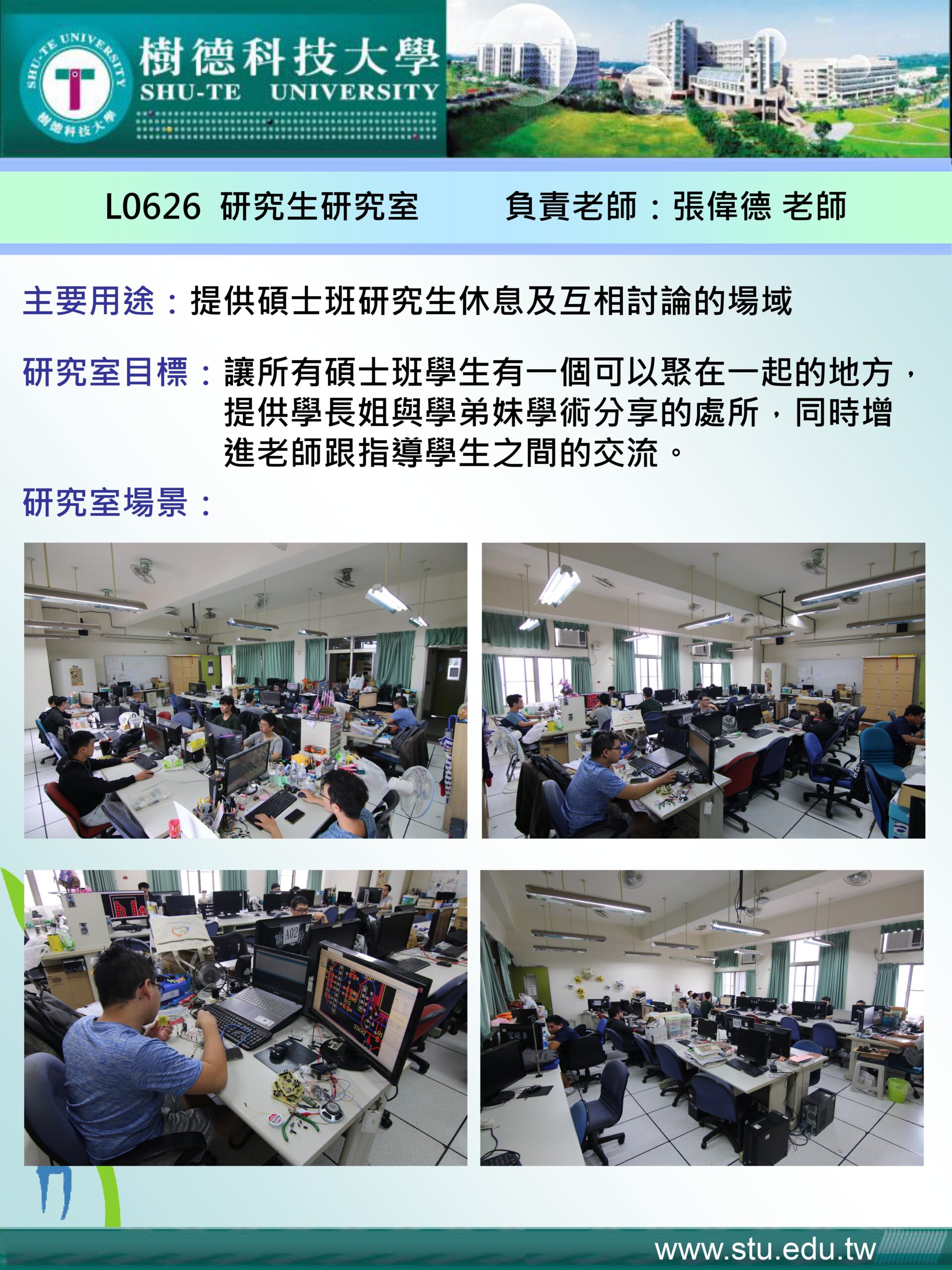
研究生研究室 |指導老師:張偉德老師
Graduate Research Office|Instructor: Wei-Der Chang
實驗室位置:L0626
Laboratory location:L0626
適用課程:論文研討
Applicable courses:Thesis discussion
主要用途:提供碩士班研究生休息及互相討論的場域
Main purpose:Provide a place for graduate students in the master's class to rest and discuss with each other
實驗室目標:讓所有碩士班學生有一個可以聚在一起的地方,提供學長姐與學弟妹學術分享的處所,同時增進老師跟指導學生之間的交流
Laboratory objectives: Provide a place where all master's degree students can gather together, provide a place for seniors and juniors to share academic knowledge, and at the same time enhance communication between teachers and mentor students.
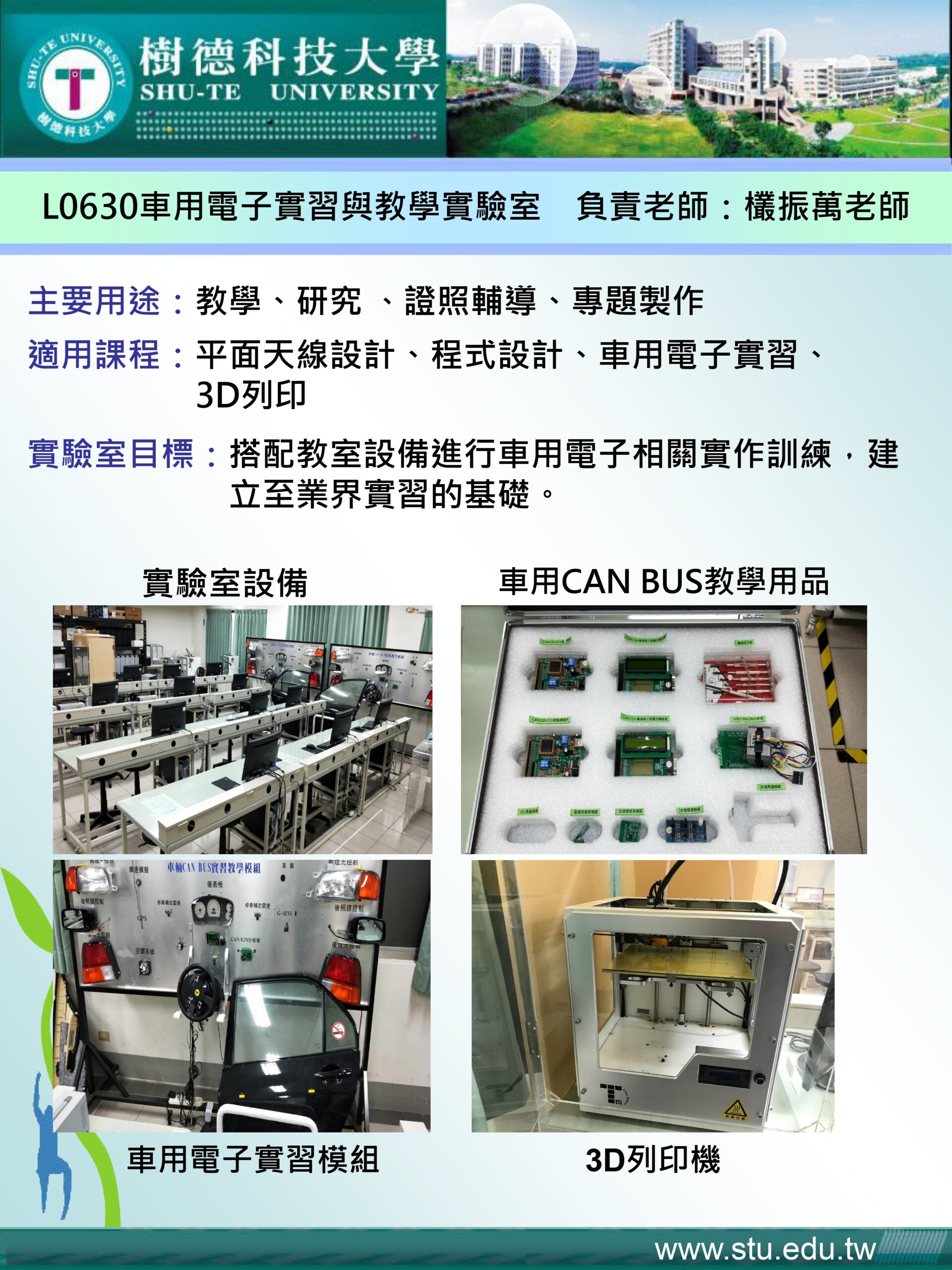
車用電子實習與教學實驗室|指導老師:程達隆老師
Automotive Electronics Practice and Teaching Laboratory|Instructor:D.L. Cheng
實驗室位置:L0630
Laboratory location:L0630
適用課程:平面天線設計、程式設計、車用電子實習、3D列印
Applicable courses:Planar antenna design, programming, automotive electronics internship, 3D printing
主要用途:教學、研究 、證照輔導、專題製作
Main purpose:Teaching, research, certificate counseling, special topic production
實驗室目標:搭配教室設備進行車用電子相關實作訓練,建立至業界實習的基礎
Laboratory objectives: Provide practical training related to automotive electronics with classroom equipment to establish a foundation for industry internships
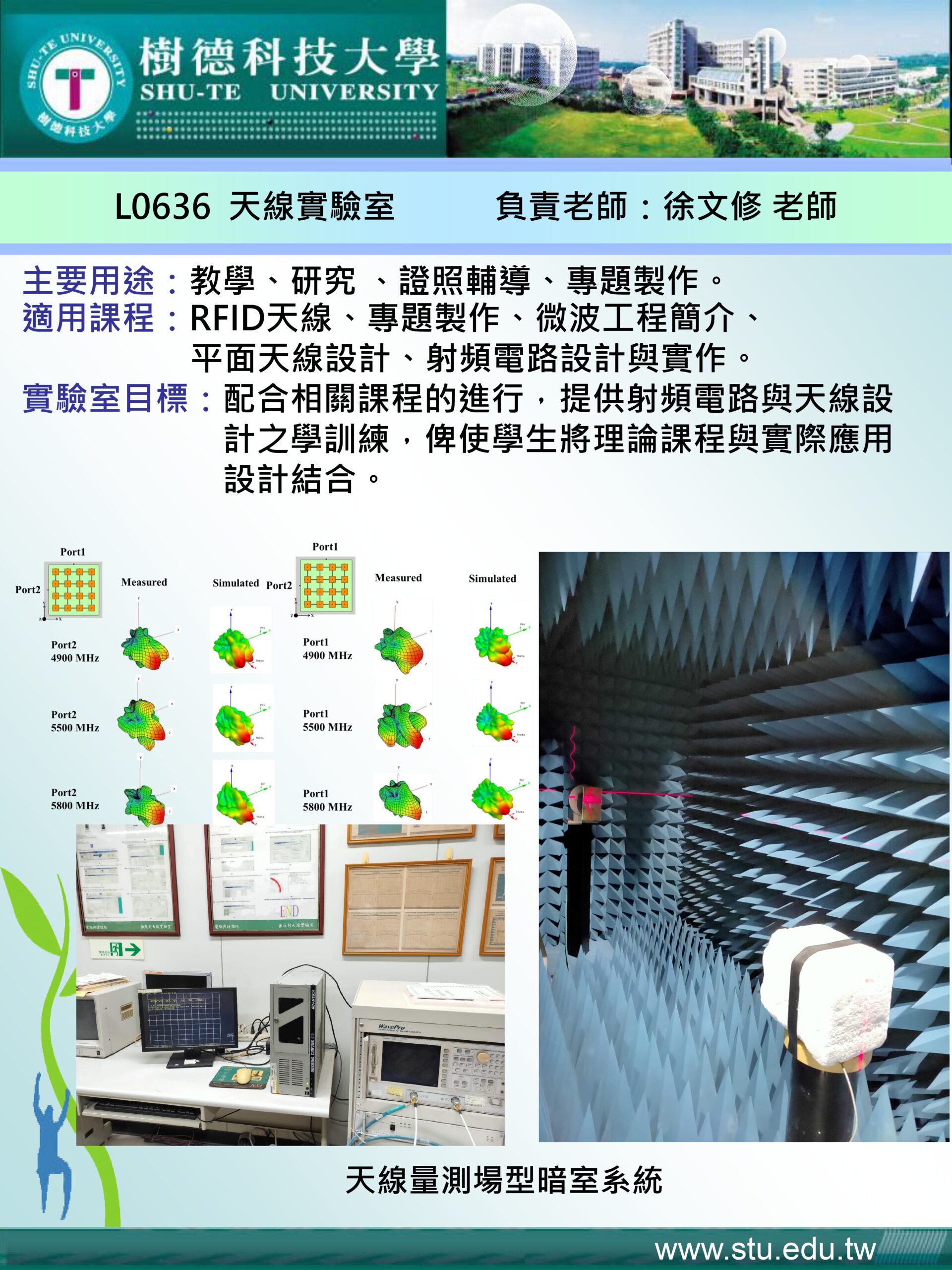
天線實驗室|指導老師:徐文修老師
Antenna Lab|Instructor:W.S. Hsu
實驗室位置:L0636
Laboratory location:L0636
適用課程:RFID天線、專題製作、微波工程簡介、平面天線設計、射頻電路設計與實作
Applicable courses:RFID antenna, special topic production, introduction to microwave engineering, planar antenna design, radio frequency circuit design and implementation
主要用途:教學、研究 、證照輔導、專題製作
Main purpose:Teaching, research, certificate counseling, special topic production
實驗室目標:配合相關課程的進行,提供射頻電路與天線設計之學訓練,俾使學生將理論課程與實際應用設計結合
Laboratory objectives:In conjunction with the progress of related courses, we provide training on radio frequency circuit and antenna design so that students can combine theoretical courses with practical application design.
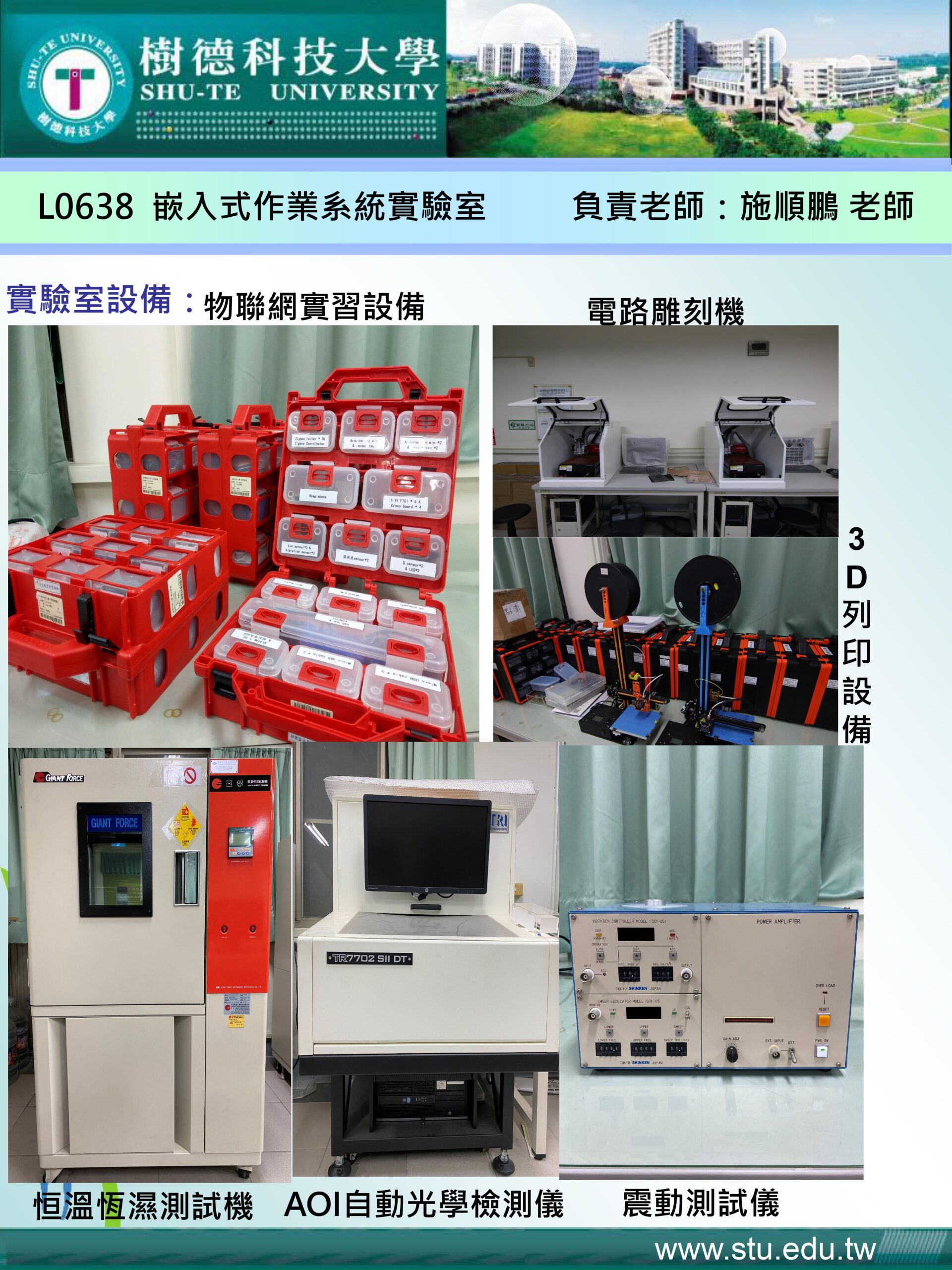
嵌入式作業系統實驗室|指導老師:施順鵬老師
Embedded operating system laboratory|Instructor:S.P. Shih
實驗室位置:L0638
Laboratory location:L0638
適用課程:IOT物聯網技術應用、嵌入式作業系統與應用、專題製作I、II、III
Applicable courses:IOT Internet of Things technology application, embedded operating system and application, special topic production I, II, III
主要用途:教學、研究 、證照輔導、專題製作
Main purpose:Teaching, research, certificate counseling, special topic production
實驗室目標:配合相關課程的進行,提供相關嵌入式系統之教學訓練,俾使學生將理論課程與實際應用設計結合
Laboratory objectives:In conjunction with the progress of relevant courses, we provide teaching training on related embedded systems so that students can combine theoretical courses with practical application design.